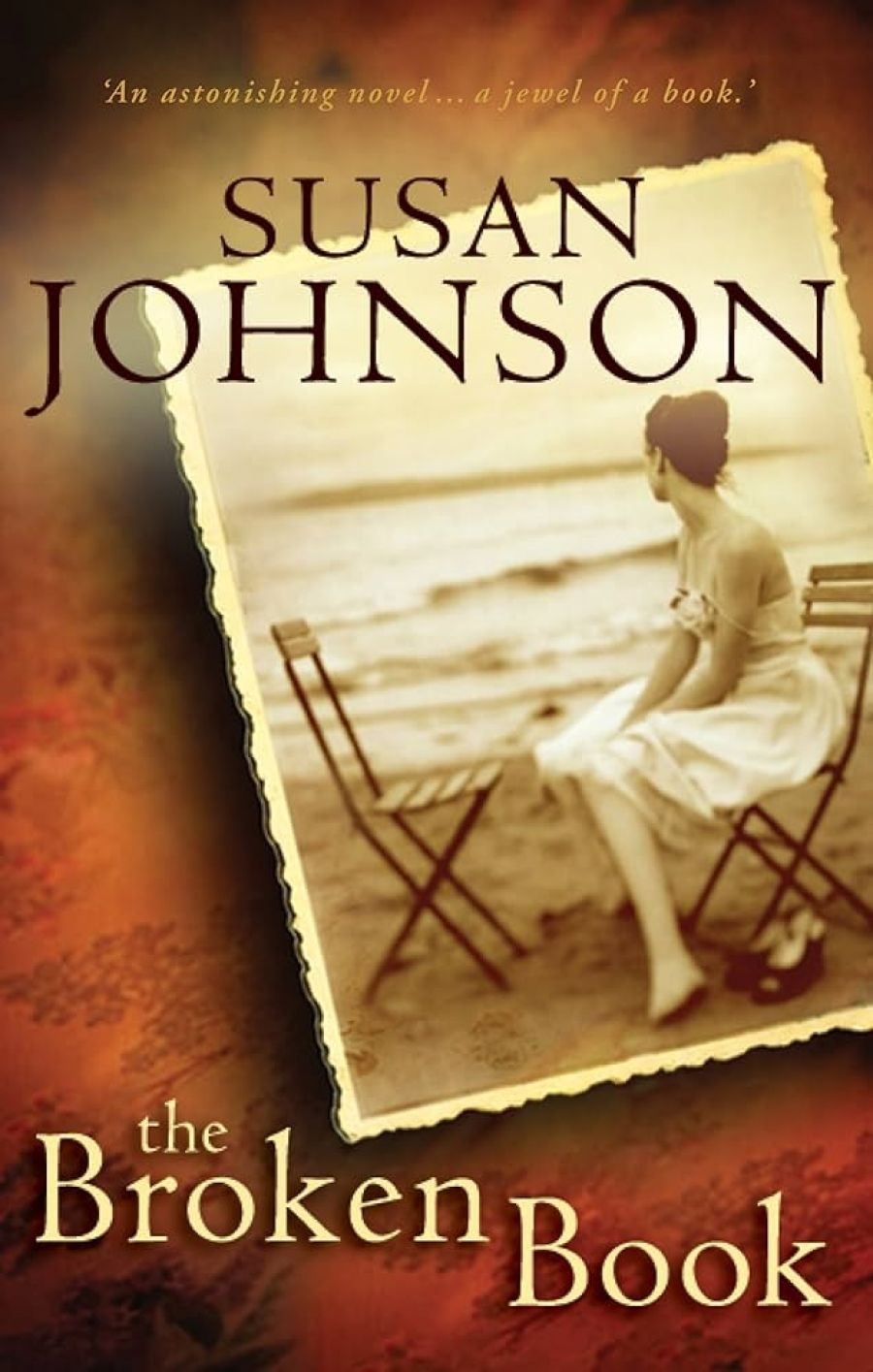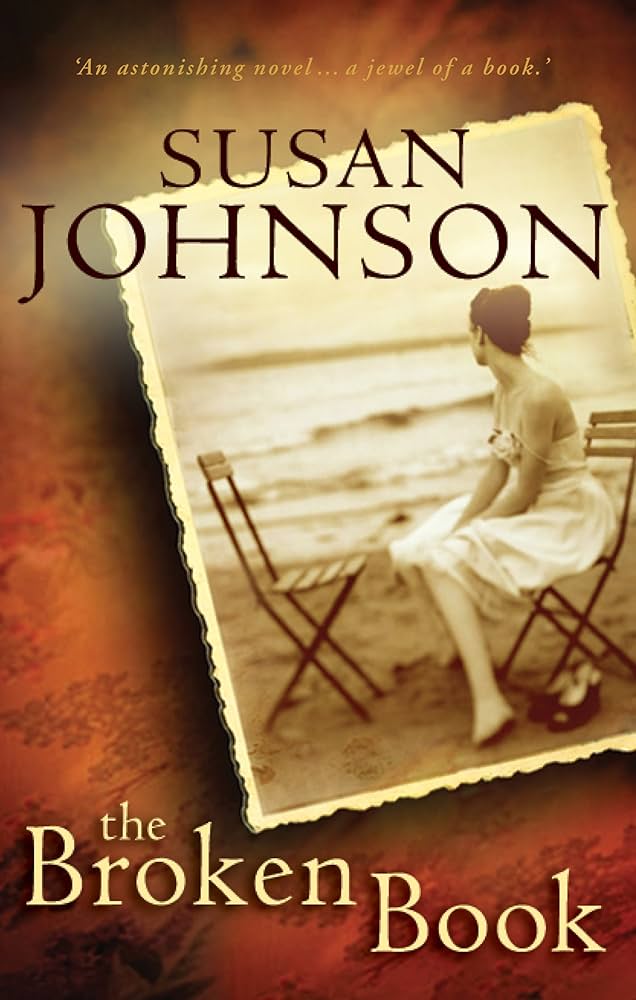
- Free Article: No
- Contents Category: Fiction
- Review Article: Yes
- Article Title: Damaged Subjects
- Online Only: No
- Custom Highlight Text:
Charmian Clift, this novel’s muse and model, was born the same year as Elizabeth Jolley. If she had lived to see the 1980s, that decade would almost certainly have given her a new lease of life as a writer. It was an idyllic time for Australian women writers; second-wave feminism brought in its wake a different kind of readership, a generation of adventurous publishers, and many opportunities for women writers to use new kinds of voices to say new kinds of things.
- Book 1 Title: The Broken Book
- Book 1 Biblio: Allen & Unwin, $29.95 pb, 311 pp
- Book 1 Cover Small (400 x 600):

- Book 1 Cover (800 x 1200):

To women of Susan Johnson’s generation, just starting out as writers, the 1980s were no less kind. And it is the insights afforded by feminism, unavailable to Clift, that have made it possible for Johnson to write this particular book: to re-imagine – and indeed to want to reimagine – Clift’s life in fictional form, showing the ‘siren and unacknowledged artist’ trying through the years of the midtwentieth century to deal with the conflicting claims of beauty. marriage, motherhood, love and art. Perhaps if she had lived long enough to see some of these dilemma· addressed and analysed by the women’s movement, Clift might finally have been able to write the book she always felt she had in her, the book for which she had written various fragments but had never managed to finish.
‘Although The Broken Book is intended as a homage,’ says Johnson, ‘it departs greatly from its antecedents…it should stand independently as a work of creative fiction.’ But Katherine Elgin, Johnson’s heroine, lives a life far closer to Clift’s than this disclaimer would suggest; one of its functions is presumably to head off the inevitable cries of protest: ‘No, no. Clift wasn’t like that.’ But any reader who knows anything about Clift will find it impossible to read the book without reference to that knowledge, and it continually gets in the way of the novel’s status as an independent ‘work of creative fiction’.
To complicate things further, there is a novel-within-the-novel: Katherine is writing a book, also called The Broken Book, whose main character resembles her closely. This character is called Cressida Morley, a name that many readers will recognise from Clift’s husband George Johnston’s novel My Brother Jack (1964). Some readers will also know that Johnston pinched the name Cressida Morley from Clift’s own unpublished, unfinished autobiographical novel, The End of the Morning. Katherine and all three Cressidas are based on Clift herself. It is difficult to judge how a reader who doesn’t know any of this stuff will respond to Johnson’s novel.
There are some intractable problems, though. One is that, in writing this kind of extremely allusive and self-reflexive book, Johnson is implicitly addressing some of the big questions in literature, philosophy and psychology: questions of subjectivity and representation, of appropriation and ontology and the nature of fiction itself. And the novel just isn’t intellectually interesting enough to sustain the weight of what it has taken on. Complicated, yes; complex, no.
Until very near the end, the only voice we hear is that of Katherine, in propria persona or writing as her alter ego Cressida, and either way this character just isn’t up to the task of justifying her ambitions as an artist. Too much of what is presented to us as the intimate reflections of a great but unsung writer brimming with life and passion is actually not much more than self-absorbed gush, at once breathless and mannered. I doubt whether the writing is meant to be in direct imitation of Clift, which would have been a perilous aim for anyone; it has none of Clift’s intellectual subtlety, her originality of perception, or her profoundly literate and precise use of language.
There is a brief concluding section in which, decades after Katherine’s suicide, her daughter Anna gives a very different perspective on her mother’s life and character. Anna’s voice is a wonderful contrast and a much-needed corrective to Katherine’s romanticised view, but it is too little, too late. It might have been more effective to show Anna’s point of view intermittently throughout; as it is, this brief but final alternative voice simply destabilises the reader’s sense of how to respond.
But there is one chapter in which this book takes flight like a beautiful dangerous firework. Katherine, desperate to get on with her writing, is having her whole attention insistently claimed by her two little girls and ends up in a deadly battle of wills with one of them. For a moment, it turns into a different book altogether, dazzling and disturbing. Johnson has written before, in her memoir A Better Woman (1999), about maternal rage and other difficulties of motherhood; this is clearly her real subject as a writer. And given that the parent-child relationship concerns all of us – one way or another – all through our lives, it is a rich and inexhaustible subject for fiction. I find it hard to understand why Johnson would have wanted to rewrite someone else’s characters and stories when she clearly has at her disposal a lifetime’s worth of things to say for herself.


Comments powered by CComment